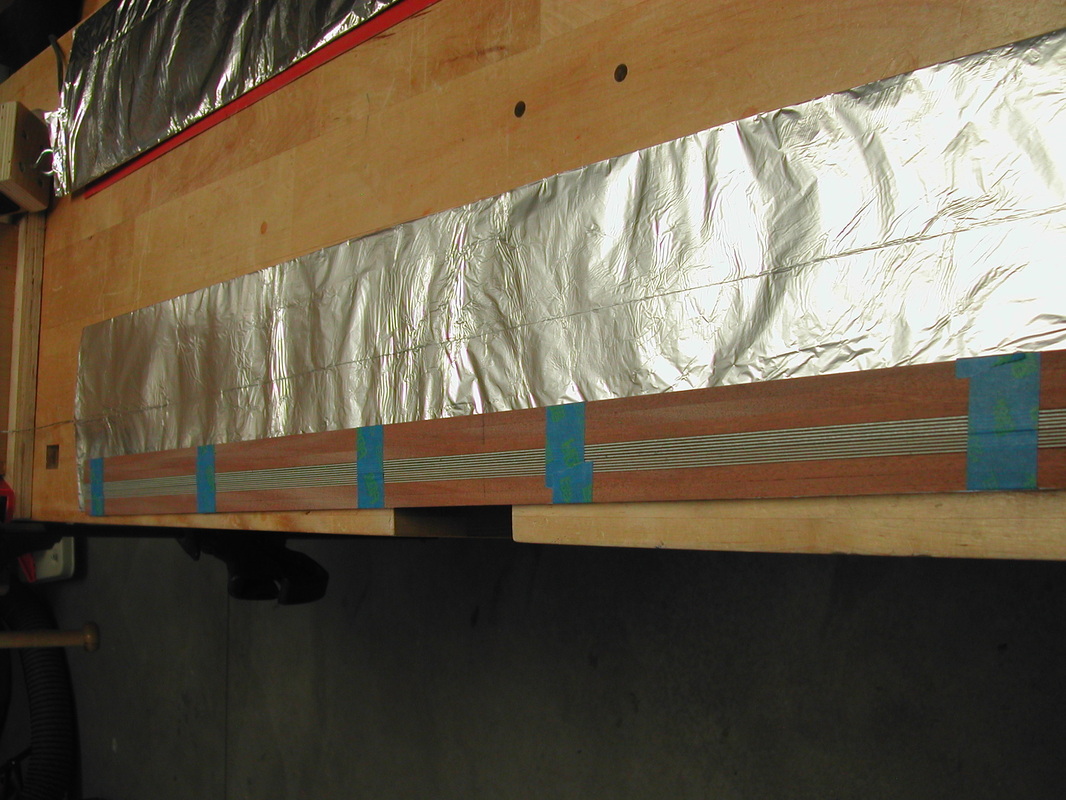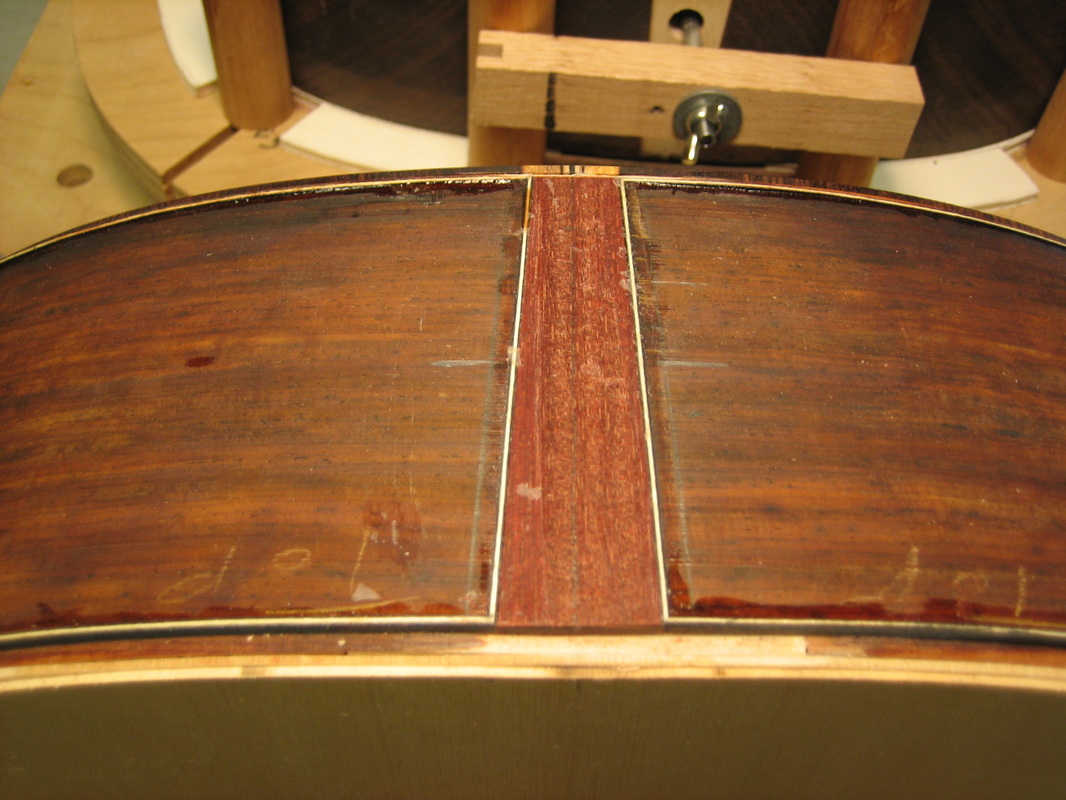Here's my response to this same question from a couple years back:
Ken Jones wrote:
I used the clothespin method for years, with good results, but always felt it was cumbersome and time-consuming. So I finally took an hour to make a jig that's both simple and very effective. Rather than describe it, I'll attach a pic that I think illustrates the idea pretty well. 

The base is made of some kind of dimensionally-stable extruded plastic molding bought at Home Depot. I replaced the wood fence with a similarly-sized piece of aluminum, and all surfaces that might come in contact with glue are lined with adhesive-backed UHMW film. Works like a charm. Using CA, I can glue up all my bindings in minutes versus hours.
Ken Jones
Mountain Song Guitars


The base is made of some kind of dimensionally-stable extruded plastic molding bought at Home Depot. I replaced the wood fence with a similarly-sized piece of aluminum, and all surfaces that might come in contact with glue are lined with adhesive-backed UHMW film. Works like a charm. Using CA, I can glue up all my bindings in minutes versus hours.
Ken Jones
Mountain Song Guitars
Sent from my iPhone using Tapatalk




